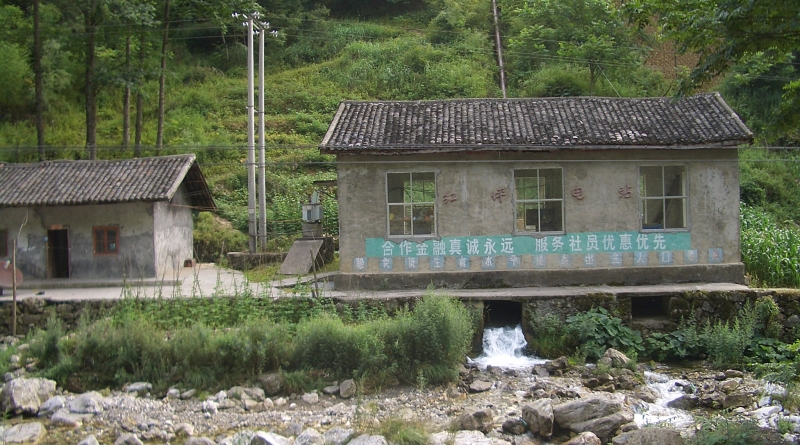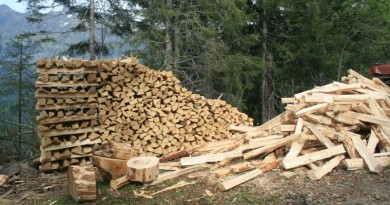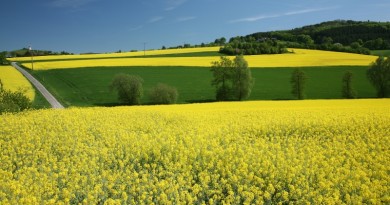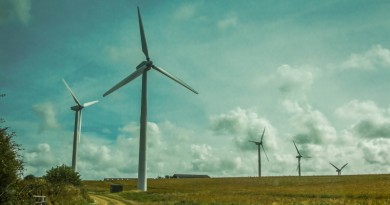Small hydro (small hydroelectric)
Contents
Small hydro is facility which converts potential energy of the water into the kinetic energy in form of water current, then into mechanical energy spinning of the turbines, and finally in the end, electrical energy in the generator. In the last few years world trends in energy have shifted towards renewable energy sources, and because of this small hydroelectrics are becoming increasingly popular. Small hydroelectrics are believed to have zero impact on environment unlike big hydroelectric plants that cause big damage to nearby ecosystems, have negative influence on soil, cause flooding, increase methane emissions, and overall emissions connected with the building and transport process. The huge amounts of water in pipelines of drinking water are logical choice as the potential source of energy. Given the fact that the flow through pipelines exists by the water pump site, especially at the part of the pipeline near the well, water store and pump site, where the flow of the water through the pipes is mostly achieved by the gravitational force, setting up the turbine and the supportive electric generators does not disrupt the drinking water supply, and in the same time produces electrical energy. Hydropower technology, which is considered as the renewable energy source is today technically not only most known but also most developed on global level, with the very high level of efficiency. 22 percent of world’s electricity generation comes from the small and big hydro power plants.
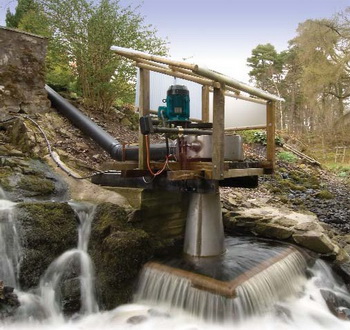
Term „small hydro” can be viewed from many different points of view, and differs from country to country, depending on its standards, hydrological, meteorological, topographic and morphologic characteristics of the location as well as about the level of technological development and economic standard. The difference between hydropower plants and small hydroelectrics is mainly in installed power. The boundary power that separates small from big hydroelectrics differs from country to country. Some states like Portugal, Spain, Ireland, Greece, and Belgium have accepted 10 MW as the top capacity for small hydro systems. In Italy top power is 3 MW, Sweden 1.5 MW, France 8 MW, India 15 MW, and China 25 MW. It has to be said that standard of 10 MW as the top output power is becoming something like a general standard in Europe, and this was also accepted by the European Small Hydroelectrics Association (ESHA), as well as European Commission. Small hydroelectrics present the combination of advantages coming from producing electricity from the energy of hydro potential and decentralized generation of electricity; while in the same time do not show negative impact on environment like big hydro power plants do.
In comparison with large hydro power plants here are some of the advantages of small hydroelectrics:
- almost no disadvantages
- no costs related with the distribution of electricity
- no negative impact on nearby ecosystems
- cheap maintenance
WATER TURBINES
Water turbine is the propulsion device in which the potential energy of the water is converted into the kinetic energy, and then with the change in amount of motion in the working wheel, in the mechanical energy of spinning. The arbor of the turbine working wheel is connected with the generator in which the mechanical energy of the spinning gets converted into the electricity. The conversion of energy towards the change of the pressure water during the motion through the working wheel is the main factor when separating different types of water turbines. Two main types of water turbines are reaction water turbines and action (impulsive) water turbines.
Reaction water turbines – Reaction water turbines are those water turbines that have higher pressure at the entrance to the rotor compared to the pressure at its exit. In these turbines one part of the potential energy is transferred into the kinetic energy in stator, and part in rotor. Rotation of the working wheel is caused by the changes in amount of the motion and the reaction force (pressure difference, Coriolois force, etc).
Action water turbines – In Action water turbines pressure at the entrance of the rotor is the same as the pressure at its exit because all the potential energy gets transferred into kinetic energy in one place, namely the stator (nozzle) of the turbine. The rotation force is here the result of only changes in amount of the motion because of the rotation of the stream in the working wheel.
DESIGN OF THE SMALL HYDRO POWER PLANTS
In order for hydroelectric to be referred as the small hydro, with the goal of protecting the environment, the term small hydro needs to have the proper categorization of energy objects that harness the hydro potential, and in the same time have these following properties:
- Minimum influence on natural streams
- Parallel work with network and the installation of asynchronous
- With the objects that have output less than 100 kW there is no transformer building but instead transformers are put on pillars
- Facility consists of dam, input duct, and/or pipeline, the engineering room, and output duct
- Overflow groundsill serves only to slow down the water flow before entering the input duct
- Instead of low overflow groundsill it can be used so called „Tyrol procedure“
- The closed type input duct is used only to guide captured water through the steep slopes and is mostly buried (it can be also completely buried)
- The open type input duct is designed for large quantity of water and is mostly used in sections that are less steep
- Pressurized pipeline needs to have the smallest possible dimensions, and its main purpose is to move the water to the engine room by choosing the shortest possible road
- The engine room also needs to have small dimensions, and operation is fully
- Output duct is open and short, and is used to return the water from the engine room to the stream (this water is rich in oxygen so fish love to reside in these areas)
These principles and categorization are of extreme importance to follow when projecting small hydro. By doing so, the negative impact on environment is reduced to minimum.
Low pressured small hydro with the engine room at the bottom of the dam
Small hydro cannot afford the building of huge reservoirs or accumulations for water accumulation and then use it in the most convenient time. The price of building the large dam would be too high, and economically unacceptable. But if the accumulation is already built for different purposes such as protection from flooding, irrigation, collecting the water for large cities, recreational areas, etc, it is possible to produce electricity by using the already existing drainage or using the natural flow of the reservoir (accumulation).
Low pressured small hydro with siphon drainage
If the dam is not too big then a siphon conduit can be built. Integrated siphon conduit enables the elegant design of the facility, most frequently to 10 meters in height, and for facility to 1000 kW, although there are facilities with siphon conduit with the installed power output to 11 MW (Sweden), and height up to 35.5 m (USA).
Small hydro integrated inside the irrigation duct
There are two designs of small hydro that use the irrigation duct:
- If the duct is big enough to support the reach, engine room, drainage, and lateral detour for water. To ensure the adequate supply of the water needed for irrigation design must also include the lateral detour in case the turbine shuts down. This design requires the simultaneous projecting because installing such system in already functional duct would be a very expensive option.
- If the duct already exists the best option is presented in the picture. The duct should minimally increase to support reach and overflow. In order to reduce the amplitude of the duct at its minimum an extended overflow should be built. From reach through the pressured pipeline water is then moved to turbine, and then through short exhaust released back into the duct. In ducts, fish mostly do not migrate so there is no need to build special passages for fish.
Small hydro installed into the system of water supply
The drinking water is transferred to the city from the elevated reservoir through pressurized pipeline. Usually, in these types of installation the dissipation of energy on the lower end of the pipeline is weakened with the help of special exhaust valves at the entrance in facility for water purification. Locating turbine at the end of the pipeline to convert already lost energy into electricity is very neat option if water surge is avoided. Constant water supply requires the installation of system of bypass exhaust valves. In some water supply units turbine has exhaust into the open pool or lake. The control system maintains the level of water in the pool. In the case of mechanical failure, or when turbine shuts down, the system of bypass exhaust valves can also maintain the level of water in pool. If by any chance main exhaust valve malfunctions per-pressure appears this opens up the auxiliary exhaust valves. These control systems are even more complex in systems where the turbine’s exit is exposed to the counterpressure from water network.
INVESTMENT COSTS AND RUNNING COSTS
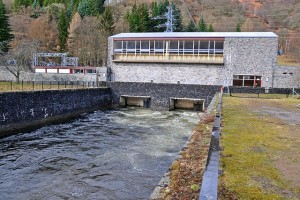
Each energy facility, except production of energy, also uses energy for its own work. These costs are called running costs. With water supply systems in the pipelines the hydraulic power is manifested by increase in pressure which is counter parted by the attenuating elements which consume energy. Attenuation of the pressure can also be achieved by setting up the turbines at the adequate places in the pipeline, and with it is possible to get share of energy needed for driving the pumps. If it is possible to get the extra energy that energy can be further exploited or sell, which minimizes the running costs of the facility and as economic bonus gets the useful energy.
Generally speaking, large hydroelectric power plants have certain difficulties in competing with the conventional generation, but small hydro, especially very small hydroelectrics and the ones with low flow can compete normally with fossil fuels and nuclear energy. The initial costs are high but the running costs are extremely small since there is no fuel needed to run the facility. The needed capital for small hydro depends on effective fall, water flow, geological and geographic characteristics, gear (turbine, generators) and construction works, and also about the continuity of the flow. Using already build dams, barriers, reservoirs and lakes can significantly decrease not only costs but also environmental impact. Power plants with small fall and large flow demand higher capital costs because construction work and turbine mechanization must withstand larger flow of the water.
ECOLOGICAL IMPACT
Advantages:
- Small hydroelectrics are ecologically very acceptable because they do not emit CO2 while generating energy like fossil fuels do
- Decreased consumption of fossil fuels
- They help in protection from flooding, and do not require large areas
- They ensure safe and reliable supply with electricity, with efficiency up to 90%, and small running costs
- Positive social effect in region (new jobs, etc.)
One GWh of electricity produced in small hydro means:
- Avoiding the emission of 480 tons of carbon dioxide (CO2)
- Enough electricity to supply 250 homes in developed, and 450 homes in developing countries
- Savings up to 220 tons of fuel or savings of 335 tons of coal
Disadvantages:
Though they do not influence the water streams like large hydroelectrics do, they still influence the local flora and fauna (migration of fish, downstream quality of water). In order to reduce this negative impact some measures can be done such as:
- Extra flow
- Passage ways for fish
- Collecting and storing the garbage
- Multifunctional drives
- Techniques that reduce noise and vibration
- Fish-friendly turbines
- Bio-design
SMALL HYDRO AROUND THE GLOBE
Asia, especially China has become the leader in the production of hydroelectric energy. Today’s development in Australia and New Zealand is focused mainly on small hydroelectrics. Canada, country with the long tradition of using hydroelectricity develops small hydro plants as the replacement for diesel power plants located in distant areas that are not connected to the central grid. The markets like South America, former Soviet Union and Africa also have huge but still unused potential. In 2000 the world installed output of small hydroelectrics was around 37GW. In 2005 alone there was increase of 8% compared to 2004, and then it was 66 GW, which presents the increase of 78% compared to 2000. More than 50% of this capacity was installed in China (35.8 GW), followed by Japan with 3.5 GW and US with 3 GW. Still, this number is very small in comparison with world primary power consumption of 15 TW, at only 0.5 %, while it accounts for 5.12% of the produced electricity on global level (data from 2006).
Europe is ranked second in producing electricity from small hydroelectrics, right behind Asia. Hydro energy accounts at about 84% of share in total generation of electricity coming from renewable energy sources in EU-27, and at about 13% of totally generated electricity in EU-15. In 2001 small hydroelectrics have contributed at approximately 2% in total electricity generation in EU-15, and around 9% of total electricity coming from renewable energy resources. Small hydro power plants account for approximately 4.6% of entire hydro energetic production in new EU members and Turkey. Neither one of other renewable energy sources (wind, biomass, photovoltaics), cannot compete with the small hydroelectrics. EU-15 countries have about 14,000 small hydro with the average installed power of 0.7 MW, new EU members (EU 10) have about 2800 small hydroelectrics, with the average power of 0.3 MW, Romania, Bulgaria and Turkey about 400 small hydroelectrics, with the average power of 1.6 MW.
